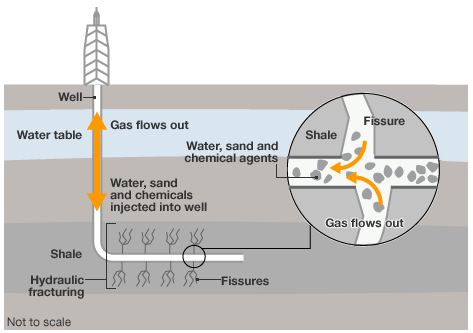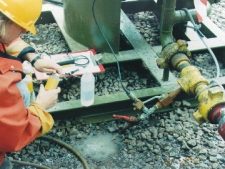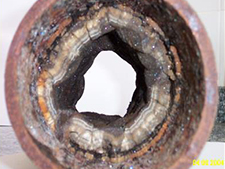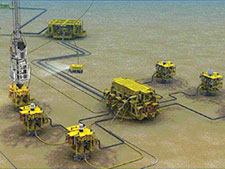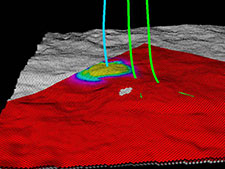Background
Accelerated production of natural gas from shales and tight sands can be achieved by hydraulic fracturing of horizontal wells. This involves injection of base water, proppant sand and various chemicals (e.g. corrosion inhibitor, scale inhibitor, biocide, etc). The well is then produced; generally, ‘frac’ fluid is produced first followed by a mixture of ‘frac’ fluid and formation water. As the fraction of ‘frac’ fluid decreases, gas production increases and after some months gas is the dominant produced fluid with minor formation water.
Services
Our services have been applied extensively on conventional resources but are equally beneficial to these unconventional cases.
Monitoring
It is useful to monitor ‘frac’ fluid compositions, and also produced water compositions both immediately after hydraulic fracturing and during longer term production. These data can be used to assess whether contamination of shallow aquifers has occurred and provide information on formation water compositions, and the fractions of ‘frac’ fluid and formation water in produced water. Such information can be used to benefit reservoir, scale and water management for the field as well as ‘frac’ planning.
In this respect, we can provide ‘frac’ fluid, formation water and produced water sampling and analysis advice and we can also evaluate the quality of any samples and analyses already obtained.
Water management, reservoir management and ‘frac’ planning
Despite the subsequent production of formation water from these reservoirs, hydraulic fracturing operations are significant net consumers of water because much of the injected water is lost to the formation through imbibition. Also, the composition of the produced water can be significantly different to that injected due to the presence of formation water and the effects of reactions in the reservoir. The formation water may be derived from the reservoir formation but where fracturing extends to the boundary of the reservoir, it might also be derived from an adjacent formation. Sometimes the produced water can be treated for re-use as hydraulic fracturing fluid but ultimately it may be disposed of in a water disposal well.
To aid water use and disposal planning, it is very useful to understand how the composition of the produced water is likely to change over time from each well and why. In this respect, our services (estimation of formation water compositions; interpretation of produced water analyses; geochemical and reactive transport modelling) can help provide answers to the following questions:
- Is formation water being produced from the wells?
- If so, what is its composition?
- Where has the formation water come from (i.e. is it from the reservoir or an adjacent formation)?
- How much of the produced water is formation water and how much is returned injection water?
- How has the composition of the produced water been affected by reactions occurring in the reservoir?
Determining the source of the formation water will also be valuable information for those involved in reservoir management and the planning of future hydraulic fracturing operations because it may aid understanding of the natural and artificial fracture systems.
Scale management
Scale deposition can occur adjacent to the well during hydraulic fracturing and within the well during flowback; either can impair production. Scale deposition may be the result of heating the ‘frac’ fluid, mixing of the ‘frac’ fluid and formation water, or reactions occurring between the ‘frac’ fluid or ‘frac’ fluid/formation water mixtures and the formation. Scale deposition can also occur in water disposal wells as a result of heating of disposal water during injection or mixing of different produced waters before injection. Under these circumstances scale deposition may limit injectivity.
It is important to understand the scale risks and the occurrence of scale in both production and water disposal wells. In this respect, our services can aid scale management planning by providing answers to the following questions:
- What is the scale risk in the production wells as a result of hydraulic fracturing?
- Where there are alternatives, what ‘frac’ fluid base water will result in the lowest scale risk?
- What is the scale risk to the water disposal well?
- What is the cause of observed scale?
These questions can be answered via scale prediction, constrained by information obtained from estimation of formation water compositions, interpretation of produced water analyses and geochemical and reactive transport modelling (e.g. estimating the impact of reservoir reactions on produced water compositions).


